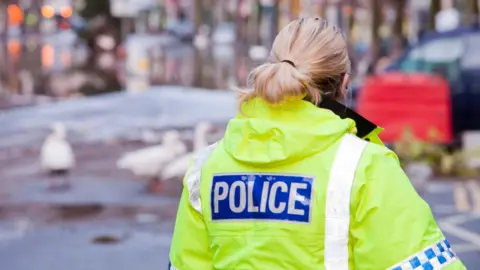The recent statements made by Sir Andy Cooke, the Chief Inspector of Constabulary, underline a heightened urgency surrounding the governance of social media content, particularly in the context of public safety. Cooke has emphasized that the media regulator, Ofcom, needs expanded authority to act against misleading posts, especially following the unrest that culminated in the summer riots of 2024. His remarks come on the heels of his agency’s second report concerning the police response to these riots, a significant portion of which delved into the influence of misinformation circulated online.
In this new report, Cooke points out that misinformation propagated through social media significantly impacts public order, thereby necessitating quicker intervention mechanisms. He voiced concerns about the delays in removal of inflammatory posts, which can contribute to escalating tensions and misinformation during critical events. The Online Safety Act, recently enacted, has yet to furnish Ofcom with adequate capabilities to swiftly eliminate harmful content, leading Cooke to argue that without the necessary tools, the regulator’s efforts can be hamstrung. “If you don’t get them down quickly, they spread virally,” he affirmed, drawing attention to the broader implications of unchecked misinformation.
Ofcom, however, has clarified its position regarding its role under the Online Safety Act, indicating that it does not possess the mandate to assess individual pieces of content or order the removal of specific posts. Instead, their mandate primarily involves ensuring digital platforms establish effective prevention systems to protect users from illegal material. This proactive stance aims to hold platforms accountable and could lead to enforcement actions if user safety is compromised. Nevertheless, during the riots, Ofcom faced scrutiny for its perceived inadequate response to the dissemination of incendiary content, highlighting a disconnect between regulatory capabilities and the urgent needs presented by unfolding events.
The report published by His Majesty’s Inspectorate of Constabulary and Fire and Rescue Services sheds light on the significant societal upheaval triggered by misinformation. The police reported over 30 arrests based on misleading or incendiary posts made during the riots, which were ignited by the tragic deaths of three children in Southport. Among those arrested were individuals such as Tyler Kay and Jordan Parlour, both of whom faced prison sentences for their roles in inciting racial hatred online. The implications of these findings underscore the critical need for more stringent regulations around online discourse, especially in times of crisis where the potential for violence looms large.
Cooke’s assertions regarding law enforcement’s preparedness are equally compelling. He noted a significant data gap regarding the specific challenges posed by social media – stating that the police were caught off guard by the scale of disorder, attributing some of this oversight to prior underestimations of threats stemming from extremist online sentiments. It was highlighted that some police forces lacked the necessary resources or infrastructure to effectively manage online communications during in-person civil unrest, leading to calls for legislative changes that would potentially deter individuals from engaging in harmful and misleading postings.
In exploring the way forward, Cooke has called for active policing strategies against disinformation, emphasizing that law enforcement agencies must be more dynamic in addressing harmful narratives online. “Policing cannot be passive when public safety is at risk,” he warned, emphasizing the importance of fulfilling the information void created when misinformation proliferates unchecked. By asserting the need for police to fill this void with factual information, Cooke underlines the imperative for a multi-faceted approach to modern law enforcement that grapples with both traditional crime and the unique challenges of the digital age.
The collective input from law enforcement and regulatory bodies illustrates a growing recognition of the complexities entwined within digital communication and public safety. As the landscape of misinformation continues to evolve, the systems in place to regulate it will need to adapt, incorporating a proactive mindset that fosters both accountability and informed public discourse.



